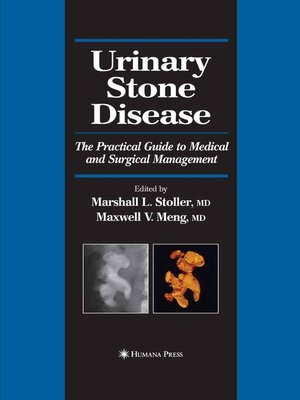Urinary Stone Disease
ebook ∣ The Practical Guide to Medical and Surgical Management · Current Clinical Urology
By Marshall L. Stoller

Sign up to save your library
With an OverDrive account, you can save your favorite libraries for at-a-glance information about availability. Find out more about OverDrive accounts.
Find this title in Libby, the library reading app by OverDrive.



Search for a digital library with this title
Title found at these libraries:
| Library Name | Distance |
|---|---|
| Loading... |
Urinary stone disease has afflicted mankind for centuries and continues to be a significant medical ailment throughout the world. Contemporary management reflects the changes and evolution that have occurred in both medicine and, specifically, urology. Traditional open surgery has been nearly replaced by minimally invasive techniques, the result of technologic innovations, miniaturization of instruments, and interdisciplinary collaboration. Nevertheless, nephrolithiasis remains a chronic disease and our fundamental understanding of the pathogenesis, and molecular and genetic basis of stones as well as their prevention, remains rudimentary. All large calculi were once small calculi. Where do stones originate and what facilitates their retention, allowing them to grow? Although we rely on 24-hour urinary collections, clearly our current methods of directing medical therapy have limitations. In addition, interest in disease prevention continues to grow and understanding basic questions and the underlying pathophysiology of stone disease will help optimize management strategies. Future advances in urinary stone disease will be the result of collaboration among urologists, nephrologists, radiologists, dieticians, scientists, and partners in industry. Physicians must not be complacent with the current status quo or be overly eager to intervene because techniques are less invasive; rather, the goals should be a better understanding of the underlying disease process in order to identify those at risk, prophylax against stone development and recurrence, and improved nonsurgical therapies.







